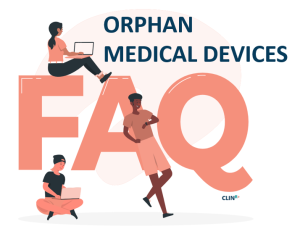Orphan Medical Devices FAQ

Q:What are Orphan Medical Devices?
A: Orphan medical devices are products or equipment intended for patient populations with a low prevalence or incidence of a particular disease. These diseases are often life-threatening or life-altering, resulting in long-term disability. Orphan medical technology includes both the device itself and any equipment that connects to it. The term “orphan” reflects the lack of interest and support these innovations often face due to their high development and testing costs compared to their limited benefit within a small community.
Q: How are orphan medical devices regulated?
A: Currently, there is no specific regulatory framework for orphan medical devices in the EU. The Medical Device Coordination Group (MDCG) is working on defining “orphan” status for certain devices and providing guidance to manufacturers. However, as of now, no regulatory framework has been established. Orphan medical devices are already regulated in countries such as the USA and Japan.
Q: How does EU MDR impact orphan medical devices?
A: The EU MDR has heightened requirements for clinical data needed for CE marking, which may inadvertently make it more challenging to secure orphan medical devices. Clinical trials for rare conditions are complex due to the limited population, making it difficult to obtain real-world data. The MDR does not currently have a specific exception for orphan medical devices, which may impede their innovation and market access.
Q: What provisions can support orphan medical devices in the EU MDR?
A: While there is no specific provision for orphan medical devices in the EU MDR, two articles may offer some support:
- Article 59: This article allows for a waiver from the normal conformity assessment procedures for devices lacking the CE mark, under certain conditions. However, this exception is valid for a limited time and requires multiple national-level approvals.
- Article 97: Orphan medical devices that don’t comply with the MDR can be dealt with on a case-by-case basis under this article. However, this approach is also limited in duration as competent authorities are required to allow a reasonable amount of time to resolve non-compliance.
This highlights the critical importance of how your Clinical Evaluation process can provide much-needed justification of the clinical need and negative consequences when there is no or limited data on your device to show conformance. By having state of the art (SoTA) literature review and write-up it will outline the current status quo that your can compare your devices as a solution against.
Q: What do manufacturers need to do if they have an orphan medical device?
A: In the absence of a regulatory framework, manufacturers can justify the critical clinical need their device addresses in the marketplace. It is critical to start by formulating your Clinical Development Plan that the product conformity journey is clear and it starts your SoTA literature review to inform you of the current status quo.
This justification should be based on the benefit-risk profile and the current state of the art for treating or diagnosing the medical condition the device targets. Demonstrating the device’s clinical need and the negative impact of not addressing that need can provide a benefit-to-risk ratio, compensating for the lack of clinical data. Manufacturers of orphan medical devices should proactively assess their benefit-to-risk profile, considering the critical clinical need their device addresses and the absence of alternatives.
Q: What is Regulation (EC) No 141/2000?
A: Clin-r+ suggests that the strategy for each orphan medical device will vary based on factors such as the quality of available clinical evidence and the device’s impact on health. Manufacturers should also familiarize themselves with Regulation (EC) No 141/2000 on orphan medicinal products, which provides criteria for the designation of medicinal products.



